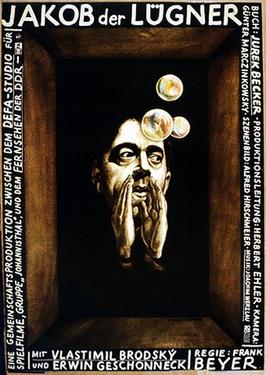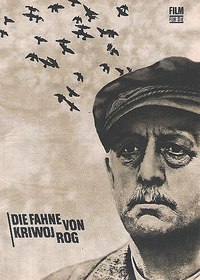
Jacob the Liar is a 1975 war drama film directed by Frank Beyer, adapted by Beyer and Jurek Becker from the latter's novel of the same title. Set in Nazi-occupied Poland during the Holocaust, the film centers on Jakob Heym, a Polish Jew who attempts to raise the morale inside the ghetto by sharing encouraging rumors that he claims he has heard on an (imaginary) radio. The film was a co-production between East Germany and Czechoslovakia. It premiered on East German television on 22 December 1974, and was released theatrically on 18 April 1975.
Girls in Gingham —sometimes called Beaverskin—is a 1949 German drama film directed by Kurt Maetzig.

Naked Among Wolves is a 1963 East German film directed by Frank Beyer and starring Erwin Geschonneck and Armin Mueller-Stahl. The film is based on author Bruno Apitz's 1958 novel by the same name. The film was remade in 2015 under the direction of Philipp Kadelbach.
Carbide and Sorrel is a 1963 East German comedy film directed by Frank Beyer and starring Erwin Geschonneck.

Five Cartridges is a 1960 East German film directed by Frank Beyer and starring Erwin Geschonneck, Armin Mueller-Stahl and Manfred Krug.
Star-Crossed Lovers is a 1962 East German romantic war drama film directed by Frank Beyer.

The Adventures of Werner Holt is a 1965 East German drama film directed by Joachim Kunert.

Familie Benthin is an East German film. It was released in 1950.
Der Rat der Götter is an East German black-and-white film, directed by Kurt Maetzig. It was released in 1950.
The Kaiser's Lackey is a 1951 East German film directed by Wolfgang Staudte, based on Heinrich Mann's 1918 satirical novel by the same name.
Shadow over the Islands is an East German black-and-white film, directed by Otto Meyer. It was released in 1952.

Berlin, Schoenhauser Corner is an East German crime film directed by Gerhard Klein. It was released in 1957.
Schlösser und Katen is an East German black-and-white film, directed by Kurt Maetzig. It was released in 1957.
Don't Forget My Little Traudel is an East German comedy film, directed by Kurt Maetzig. It was released in 1957.

The Sailor's Song is an East German black-and-white film directed by Kurt Maetzig and Günter Reisch. It was released in 1958.
Maibowle is an East German musical comedy film, released in 1959. It was directed by Günter Reisch.
Love's Confusion is an East German romantic comedy film directed by Slátan Dudow. It was released in 1959.
A Lively Christmas Eve is an East German comedy Christmas film, directed by Günter Reisch. It was released in 1962.

The Banner of Krivoi Rog is an East German film, directed by Kurt Maetzig. It was released in 1967.

The Axe of Wandsbek is a 1951 East German film, directed by Falk Harnack.








